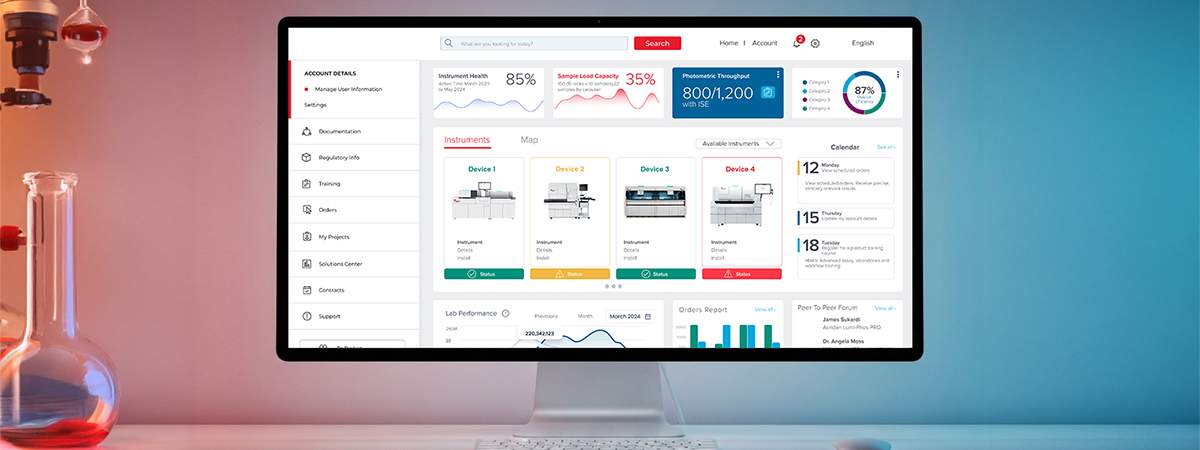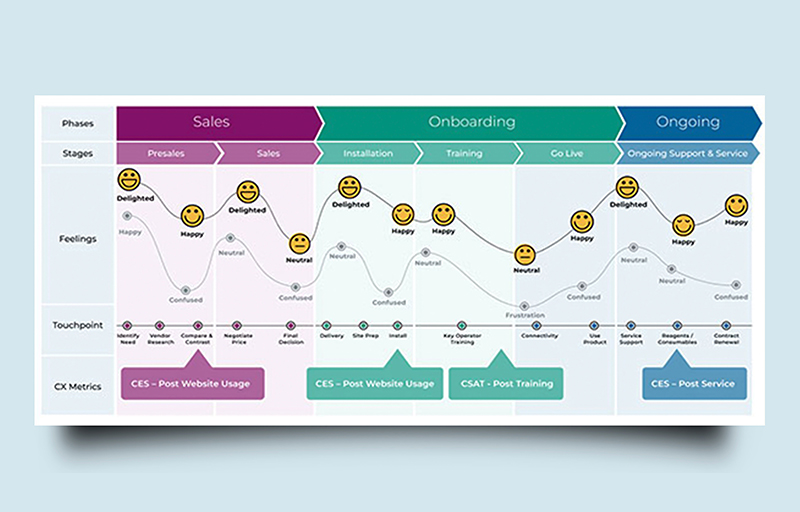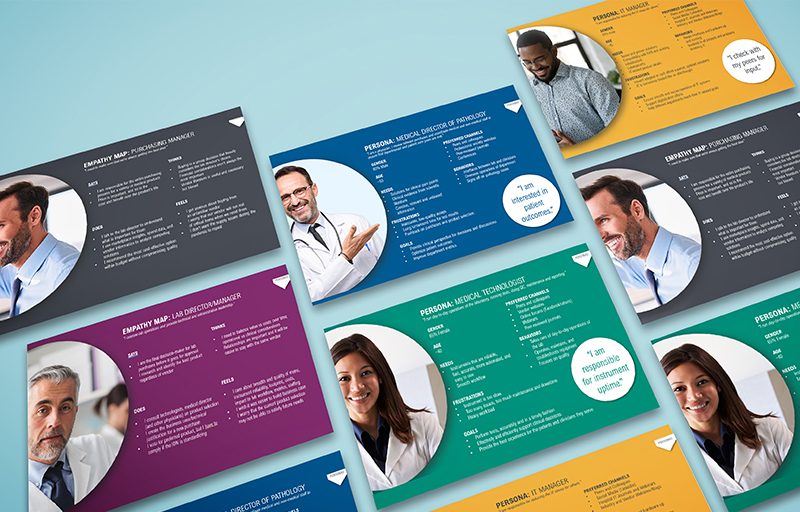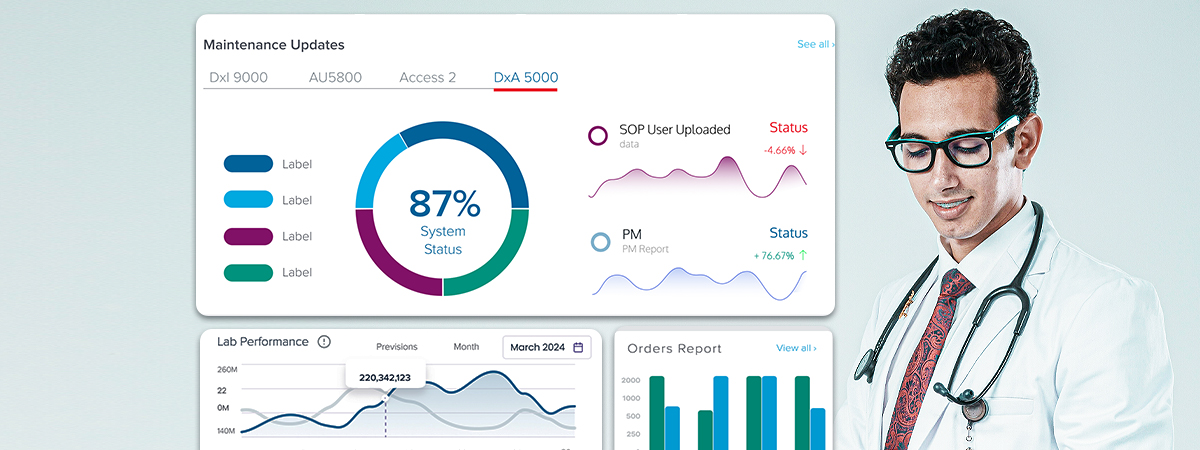
Beckman Coulter's Journey Mapping & Digital Portal
My Role:Overview
The primary objective of this project was to significantly enhance the purchasing experience for laboratory professionals on the e-commerce platform while creating a centralized digital portal to monitor laboratory instruments and activity throughout their lifecycle.
The Challenge
Laboratory professionals and procurement teams at hospitals and research institutions struggled with a fragmented purchasing experience when acquiring specialized laboratory instruments and equipment. The existing e-commerce platform lacked intelligent product discovery capabilities and provided no centralized way to monitor instrument activity post-purchase, creating significant barriers throughout the entire customer lifecycle.
Core Issues Identified:
- Poor product discovery due to complex technical specifications and inadequate search functionality
- Disconnected purchasing journey with multiple pain points from research to procurement
- No unified dashboard to track instrument performance, maintenance, or usage analytics
- Limited visibility into the relationship between purchased equipment and ongoing laboratory operations


The Process
To address the platform’s core fragmentation issues and ensure the final product would simplify the complex instrument monitoring lifecycle for our laboratory professionals, our process was rooted in cross-functional collaboration. I participated in a 3-Day Kaizen with a cross-functional team (including Global Marketing, Development, CX Manager, Content Strategy, and Subject Matter Experts) to achieve organizational alignment on core objectives, establishing a data-driven methodology that moved us beyond anecdotal fixes.
Key Process and Iteration:
- Visualization & Research: I created the visualization, participated in user interviews and affinity mapping, resulting in the User Journey Map, our core strategic artifact that outlined the buying process.
- Data-Driven Design: Employed data-driven analytics to identify key persona engagement patterns and inform all design hypotheses.
- Iterative Design & Pivot: Through intensive brainstorming and iterative wireframing in Figma, we developed the portal design. However, user testing revealed that users needed support and a central monitoring system—not just access to their purchase history.
- Solution Execution: This failure drove a crucial redesign to introduce dynamic elements (like real-time status) and ensure the new structure solved the strategic problem, validating the final design through continuous testing with representative users.
The Outcome
The project delivered significant improvements through a comprehensive redesign. The new solution featured a streamlined customer portal, integrated order tracking, improved presentation of product information, enhanced mobile responsiveness, and a user-friendly navigation system.
Key Features Delivered:
- Real-time instrument status monitoring and performance analytics
- Visual comparison tools for instrument specifications
- Personalized recommendations based on lab type and research focus
- Unified dashboard with maintenance scheduling and service history
- Single sign-on with integrated approval workflows
- Order tracking with delivery notifications and centralized contract management
- Collaborative Design: working with development and tech support to define UI elements
To enhance product discovery, we implemented machine learning algorithms to optimize the instrument search and recommendation features. These improvements resulted in a noteworthy 25% increase in conversion rate. User feedback was overwhelmingly positive, highlighting the substantial enhancement in the overall user experience and the value of having centralized instrument monitoring capabilities.
Design Insights:
Through this project, I learned that specialized personas function uniquely and differ between laboratories with distinct operational needs, requiring highly customized user experiences. Laboratorians consistently expressed high demand for live chat and connectivity features to access immediate technical support during complex purchasing decisions.
The research also revealed strong user preference for a centralized data dashboard that monitors laboratory operations comprehensively. Additionally, I identified critical low points between the sales and onboarding process that present opportunities for future UX improvements and smoother user transitions.
